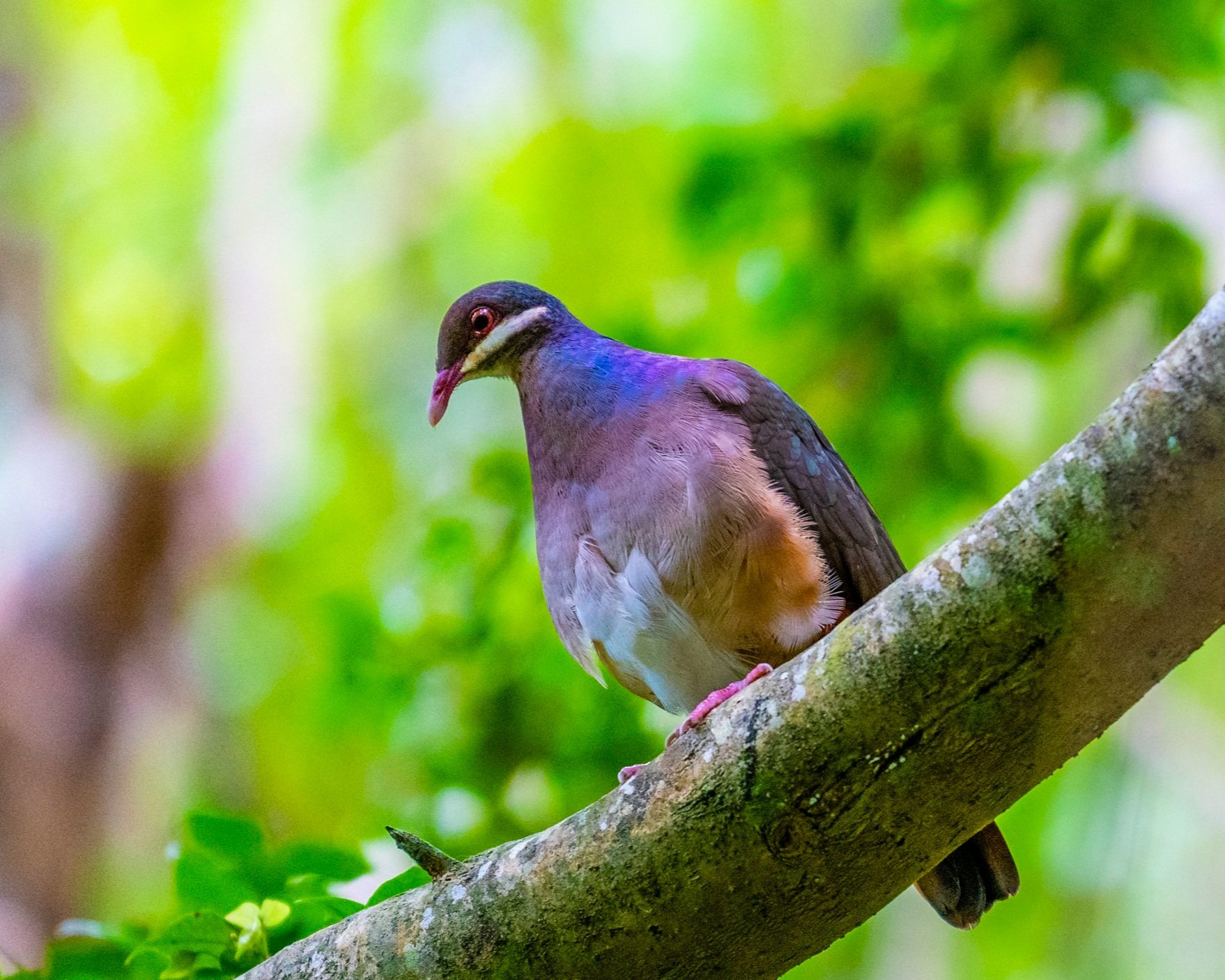In the Air: Birds
Bridled quail-dove
Geotrygon mystacea
Jumplinks:
About
Listen closely for rustling leaves and a gentle hoo-hoooo call, and you may just be lucky enough to see a bridled quail-dove meandering along Saba’s forest floor. These stunning, secretive birds are primarily ground-dwellers, spending much of their time foraging through leaf litter for a snack of seeds, fallen fruits, snails, insects, and other small critters.
This species breeds in spring, which is when their calls can most often be heard. They build large, flat platform nests, typically lay eggs in clutches of 1–2, and can be found throughout the Caribbean, especially in dense, humid forest areas.
Quail-doves strongly prefer to live under canopy-cover, which is part of why they’re often difficult to spot. They’re sensitive to disturbances in their habitat, and after hurricanes Irma and Maria altered landscapes across the Caribbean, scientists documented a large decrease in the number of bridled quail-doves on one of Saba’s neighboring islands, St. Eustatius. (Similar studies have not yet been done on Saba’s population.)
Saba is home to many dove species, but the bridled quail-dove is widely considered to be the island’s most important. These birds aid in the dispersal of seeds throughout the forests, and their iridescent, multicolored feathers (and delightful, mustache-like, white “bridle” face-markings) make them easy to love. Considering those factors and their highly elusive nature, they’re among the most special bird-sightings you can make while on Saba.
Header image by Kai Wulf.
This species is:
Native
Why that matters:
Native species are those that evolved in the region naturally, without human influence. That means they’re specifically adapted to Saba’s habitat, and play a key role in island biodiversity. When we lose native species, gaps appear in the ecosystem. That leads to cascades of additional extinctions, and to the loss of the ecosystem services (food, clean air and water, flood and coastal protections, and more) that we humans rely on.
iNaturalist Observations
Where locals, researchers, and visitors have seen this species.
Google / Imagery © 2023 CNES / Airbus, Landsat / Copernicus, Maxar Technologies, U.S. Geological Survey, iNaturalist Map data @2023
This map shows geotagged observations of this species made on iNaturalist, the world’s largest community-science platform.
iNat depends on people like you. By uploading photos of species you see in the wild, you can easily learn more about them — while also contributing critical data used by scientists and conservation-managers around the globe.
See something odd?
Observations of land species in water:
Connectivity can affect how accurate location services are, and in the case of endangered species, location is often automatically obscured.Missing observations:
Your help is needed to collect more data for this species!
Ask a Scientist
Question: What are some of the threats facing birds on islands?
Answer: One of the things that happens, especially on island archipelagos, is that as people move around the globe, we have our chickens and all the other things that we bring with us and are introducing diseases as we go. A lot of the birds that are disappearing from islands are doing so largely because of humans bringing diseases to those islands quite accidentally. To better understand that, we study the avian virome, or the suite of viruses that live on island birds.
Dr. Jack Dumbacher
Curator of Ornithology & Mammalogy, California Academy of Sciences
Related Content
Lesser Antillean whistling frog
On Land: Amphibians
Audubon’s shearwater
In the Air: Birds









